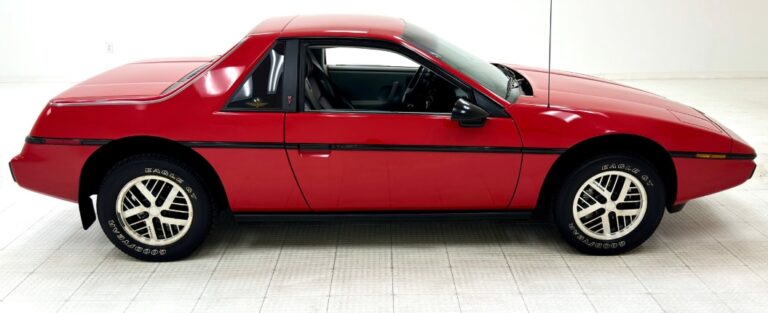The Evolution of the Volkswagen GTI: A Legendary Hot Hatch
The Volkswagen GTI, a term synonymous with performance, practicality, and distinctiveness, has maintained its status as a pioneering hot hatch since its inception in the mid-1970s. From its humble beginnings to its present incarnation, the GTI lineage has been characterized by ingenuity, engineering excellence, and a spirit of fun. This article explores the evolution of the Volkswagen GTI, shedding light on its production years, model variations, and trim levels.
First Generation: The Birth of a Legend (1976-1983)
Introduction:
The first-generation Volkswagen GTI, known as the Mk1, debuted in 1976. Initially conceived as a special version of the Volkswagen Golf, the GTI quickly redefined the concept of a hot hatch.
Key Features:
- Engine: 1.6L I4, producing 110 hp.
- Transmission: 5-speed manual.
- Design: Distinctive GTI styling included sportier design elements like a black grille, unique seats, and subtle bodywork modifications.
Trim Levels:
- The Mk1 was produced with few variations but did offer optional package upgrades, such as leatherette upholstery and sport suspension. The car’s affordability and sporty edge appealed to a wide audience.
End of Production:
In 1983, the first generation of the GTI ceased production but left behind a legacy that would inspire future generations.
Second Generation: Evolution and Refinement (1984-1992)
Introduction:
The Mk2 GTI marked a significant step up in performance and comfort. Launched in 1984, it maintained the same spirit while introducing new technology and design.
Key Features:
- Engine: The first year saw the GTI equipped with a 1.8L I4, producing 112 hp, which later evolved to include a 16V variant producing 134 hp.
- Transmission: 5-speed manual and a 4-speed automatic option.
- Design: The Mk2 was larger and featured a more rounded exterior while retaining the sporty identity.
Trim Levels:
- Base GTI
- GTI 16V – A high-performance variant.
- GTI G60 (introduced in 1989) – This model features a supercharged 1.8L engine and produced 160 hp.
End of Production:
The second generation ended in 1992, solidifying the GTI’s persona in the hot hatch sector.
Third Generation: The Power Increase (1992-1998)
Introduction:
The Mk3 GTI arrived with improved safety features and a focus on comfort, launched in 1992.
Key Features:
- Engine: Offered a 2.0L I4 engine with 115 hp, with an option for a 2.8L VR6 producing 172 hp as the top-tier performance model.
- Transmission: 5-speed manual, 4-speed automatic.
- Design: The Mk3 featured a more modern aesthetic, with a blend of performance and sophistication.
Trim Levels:
- GTI
- GTI VR6 – Introduced in 1995, aimed at enthusiasts seeking more power and performance.
End of Production:
The third generation concluded in 1998, with a solid fan base and marked improvements over its predecessors.
.

.
Fourth Generation: The Return to Roots (1999-2005)
Introduction:
The Mk4 GTI, launched in 1999, heralded a return to compact, agile performance with a balance of both driver enjoyment and daily usability.
Key Features:
- Engine: Offered a 1.8L turbocharged I4 producing 150 hp and a 2.8L VR6 for 200 hp.
- Transmission: 5-speed manual and a 6-speed automatic option.
- Design: Sporty yet refined look with increased interior quality.
Trim Levels:
- GTI 1.8T
- GTI VR6 – Aimed at power enthusiasts.
End of Production:
The Mk4 was produced until 2005. By the time it left the assembly line, it had cemented the GTI’s place in automotive history.
Fifth Generation: Modern Performance (2006-2014)
Introduction:
The Mk5 GTI was launched in 2006, showcasing modern technology and performance enhancements while honoring its legacy.
Key Features:
- Engine: 2.0L turbocharged I4, producing 200 hp.
- Transmission: 6-speed manual and 6-speed DSG dual-clutch automatic transmission.
- Design: More aggressive look with performance-oriented design tweaks.
Trim Levels:
- GTI – The base model.
- GTI Pirelli Edition – Introduced during the 30th anniversary of the GTI.
- GTI Winter Package – Offered enhancements for cold weather performance.
End of Production:
The Mk5 GTI left production in 2014, characterized by impressive handling and the consumer demand for a more performance-oriented smaller car.
Sixth Generation: Merging Efficiency with Performance (2015-2019)
Introduction:
The Mk6 GTI, released in 2015, retained core elements while continuing to innovate in efficiency and performance.
Key Features:
- Engine: 2.0L turbocharged I4, improving to 210 hp.
- Transmission: 6-speed manual and 6-speed DSG automatic.
- Design: A refined mix of the previous generation’s styling and modern touches.
Trim Levels:
- GTI S – Base level.
- GTI SE – Added luxury touches and features.
- GTI Autobahn – High-end with advanced technology and comfort.
End of Production:
The sixth generation was manufactured until 2019, continuing to attract fans of both performance and practicality.
Seventh Generation: The Pinnacle of Hot Hatches (2020-Present)
Introduction:
The current generation, the Mk7 GTI, debuted in early 2020, bringing with it all that the modern car enthusiast desires.
Key Features:
- Engine: 2.0L turbocharged I4 producing 241 hp.
- Transmission: 6-speed manual and 7-speed DSG.
- Design: Aggressive styling with a tech-focused interior, featuring a digital cockpit.
Trim Levels:
- GTI S – The entry-level hot hatch.
- GTI SE – Mid-tier options with added comforts.
- GTI Autobahn – Fully loaded with top specs and full features.
Future Prospects:
The Mk7 has laid a promising foundation for the GTI’s future as Volkswagen ramps up its electric vehicle lineup, hinting at the introduction of an electric GTI.
Conclusion
The Volkswagen GTI represents more than just a series of cars; it’s a testament to the evolution of automotive engineering and consumer expectations. Over more than four decades, it has maintained its commitment to performance, versatility, and fun at the wheel. As the GTI continues to evolve, it will undoubtedly remain a beloved icon in the automotive world and a benchmark for other manufacturers in the hot hatch segment. From its origins to its latest iteration, the GTI embodies the essence of what a compact performance car should be—a celebration of driving in all its glory.







